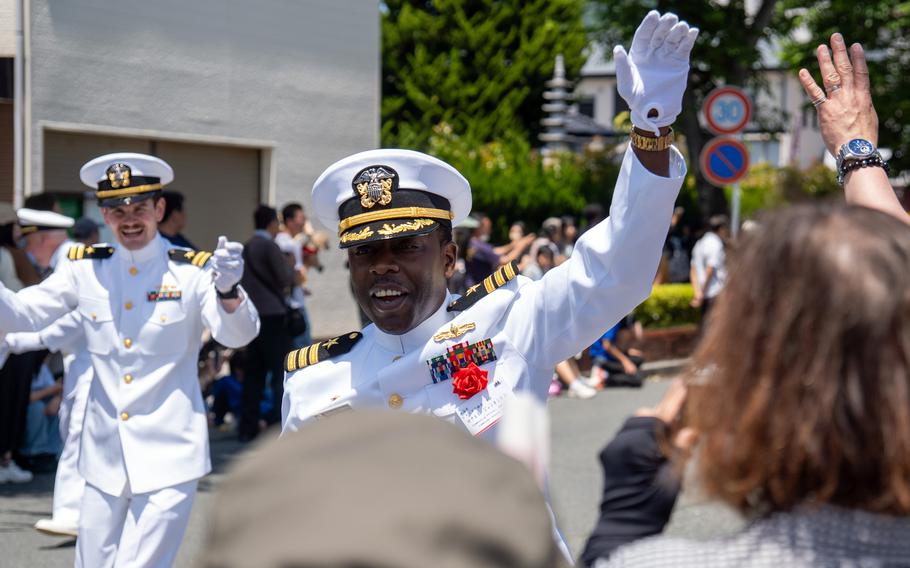
Cmdr. Ronald Jenkins Jr., skipper of the guided-missile destroyer USS Higgins, and Lt. Michael Sparrow, navigator, parade through Shimoda, Japan, during the Black Ship Festival on May 18, 2024. (Akifumi Ishikawa/Stars and Stripes)
SHIMODA, Japan — Parades, fireworks and music livened the normally quiet streets of this coastal city over the weekend as throngs of people celebrated 171 years of history between the Japan and the United States.
More than 200,000 people visited Shimoda, about 80 miles southwest of Tokyo, for the 85th annual Black Ship Festival between Friday and Sunday. The event commemorates Commodore Matthew Perry’s arrival in July 1853 and the subsequent signing — under the threat of force — of the U.S.-Japan Treaty of Peace and Amity.
Events included a reenactment of the March 1854 treaty signing, cultural exhibitions, an official ceremony dedicated to international peace and a graveside memorial for members of Perry’s crew who died in Japan.
Sailors from the guided-missile destroyer USS Higgins, which anchored off Shimoda’s coast, were scheduled to spend time at local elementary schools, but the visits were canceled due to high waves and strong winds.
Perry’s arrival in four heavily armed warships — Japan had no navy at the time — is considered an example of gunboat diplomacy.
The agreement Perry eventually reached with the Japanese, also known as the Kanagawa Treaty, effectively ended more than two centuries of Japan’s isolationist policy and opened Shimoda and another port, Hakodate, to U.S. ships for provisions and refueling.
The USS Warrior, a mine countermeasures ship homeported in Sasebo, Japan, visited Hakodate last week to commemorate Perry’s visit there on May 17, 1854.
The treaty was a “pivotal moment” for U.S.-Japan relations, said Rear Adm. Carl Lahti, commander of Naval Forces Japan.
“The arrival of Commodore Perry’s expedition not only heralded the beginning of a vibrant exchange between our two nations but also laid the foundation for the enduring partnership that defines our relationship today,” he said at the festival’s opening ceremony.